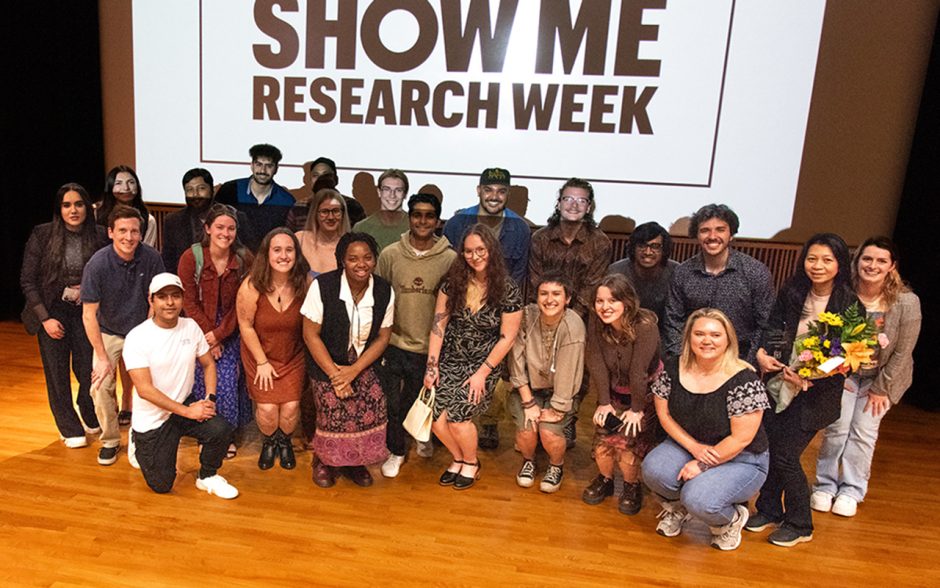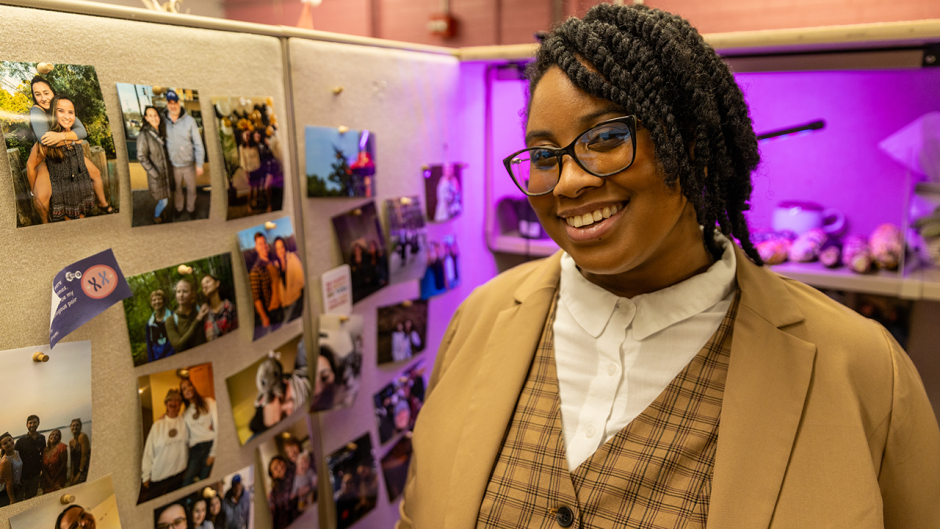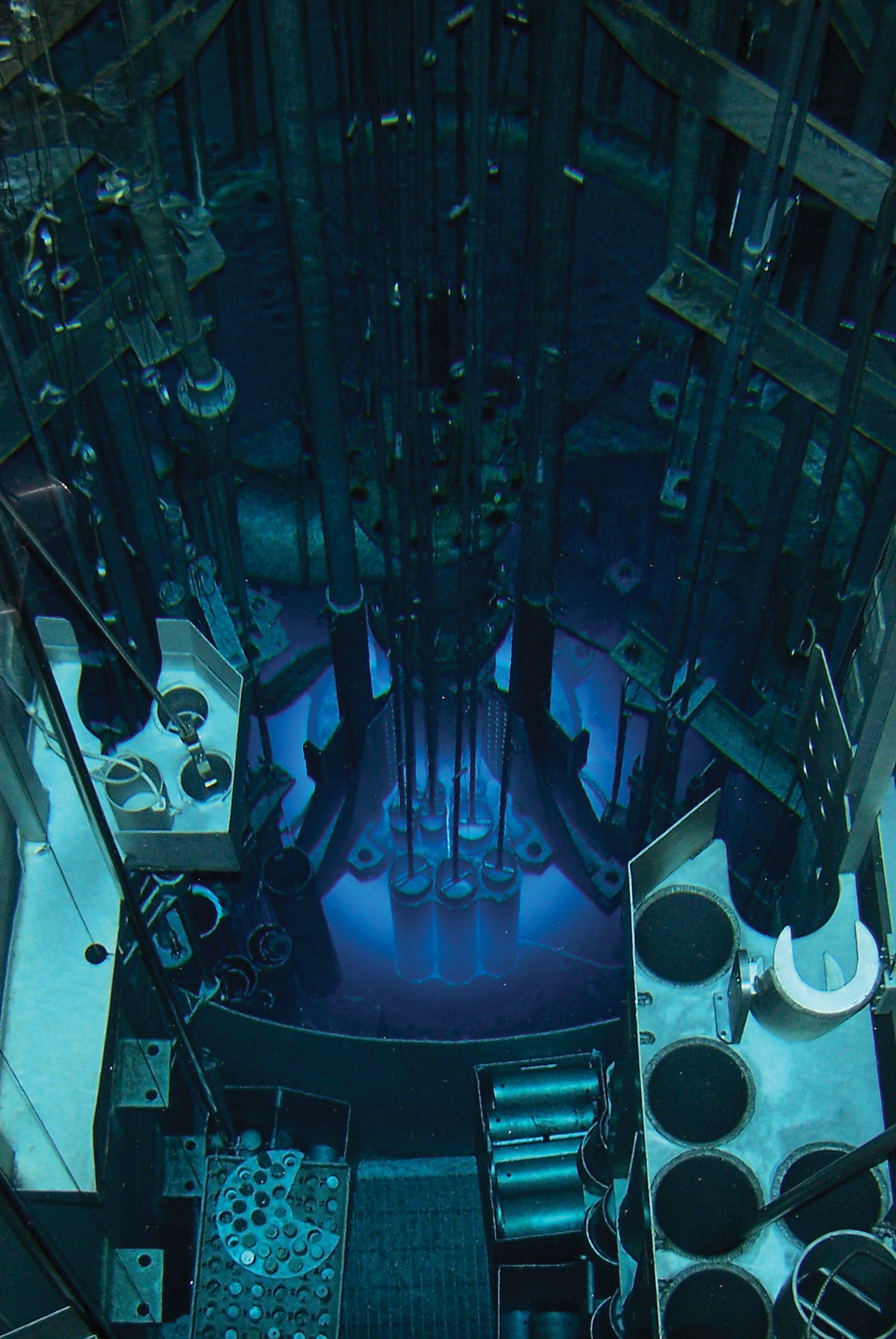
Opened in 1966 at 5 megawatts and upgraded to 10 megawatts in 1974, the University of Missouri Research Reactor is not only the largest facility of its kind in the United States but also one of the most reliable such resources serving students, scientists, engineers and industry representatives worldwide.
At 10 megawatts, the University of Missouri Research Reactor (MURR) is the most powerful university-based research reactor in the nation. Rather than generating electricity, the facility produces knowledge across a surprising range of disciplines. New findings can help save lives of cancer patients, catch smugglers, fend off crop-killing pests and reveal ancient Rome’s mysteries through its pottery.
Eeny, meeny, miny, moe
There is no shortage of ripped-from-the-headlines reasons to know who has been exposed to radiation (not to mention how much, what kind and how long ago). But the traditional urine test for nuclear plant workers, which detects radiation exposure up to 48 hours in the past, can’t handle many modern scenarios.
In response, MURR researcher John Brockman, PhD ’06, and colleagues developed a new test that answers pressing questions about radiation exposure going back up to one year. The scenarios are the stuff of spy novels and international news:
• After nuclear accidents like those at Three Mile Island or Fukushima, how can people be tested accurately for exposure? Or,
• When inspectors examine nuclear plants, how can they be sure the facility has been making only the types of uranium that cannot be used for weapons? Or,
• What if police in Eastern Europe arrest a man trying to sell a jar of black-market uranium — the enriched kind suitable for weapons. “There’s more uranium on the move around the world than you might think,” says MURR researcher John Brockman. Law enforcement officers want to know: Is this man just a driver? Did he also perform the chemistry to make the uranium? How long has he been dealing with the material?

by detecting exposure to nuclear material that accumulates in toenails and hair, which retain signs of exposure for months, police could nab smugglers of nuclear material. Shutterstock photo.
In contrast to the 48-hour urine test, Brockman’s new approach detects exposure to special nuclear material that accumulates in toenails and hair. Like urine, these structures take up uranium and plutonium. Unlike urine, toenails and hair are slow-growing body parts that retain signs of exposure for months.
Using expertise and equipment at MURR, Brockman developed a noninvasive test that turns around results in two days. The test also reveals the types of uranium to which subjects have been exposed. “We were able to identify exposure to enriched uranium, which is used to make both nuclear fuel and weapons, and U-236 which is suggestive of nuclear fuel reprocessing.”
So, how do you nab a uranium trafficker?
Eeny, meeny, miny, moe, catch a smuggler by the toe.
Doubling up on cancer
Twins fascinate, whether, identical, fraternal or evil. Considering arsenic’s reputation as a stealthy poison, you might assume that the element’s twin radioactive isotopes, 72 and 77, would fall into the “evil” category. But radiochemist Silvia Jurisson has uncovered their higher qualities for cancer care.
For decades, Jurisson has worked to refine nuclear medicine approaches to diagnosis and treatment: A drug containing a diagnostic radioisotope gathers in certain tumors and lights up on, say, a PET scan. Afterward, the same drug containing a therapeutic isotope carries medicine into the body in search of those tumors.
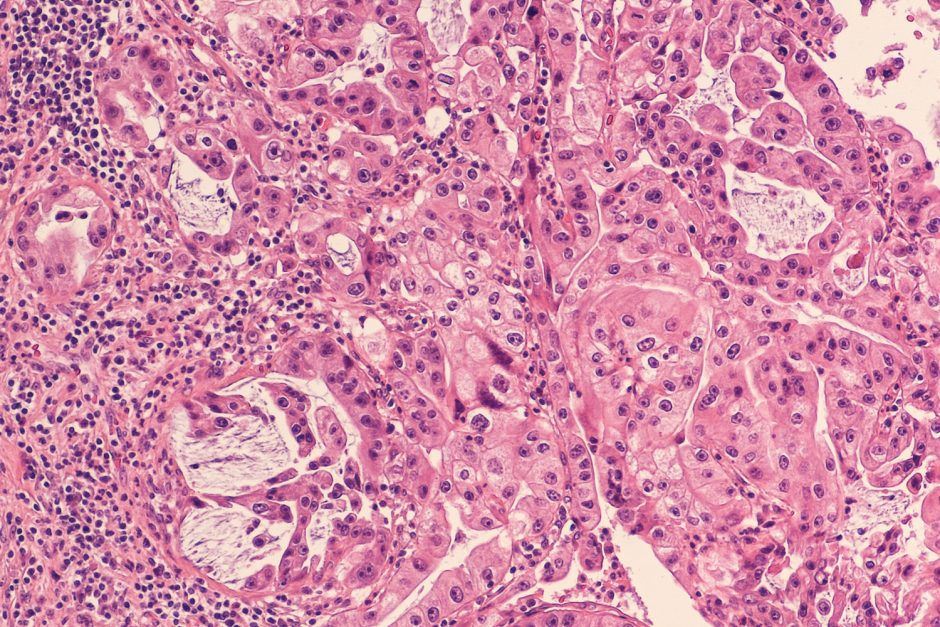
Twin isotopes of Arsenic could not only detect but also treat cancers, including those of the pancreas. Shutterstock photo.
Unfortunately, diagnostic and therapeutic isotopes may not move around the body in the same ways. As a result, therapeutic isotopes often don’t home in on tumors that the diagnostic isotope has pinpointed. Thus, chemotherapy medicines can land in healthy tissues and cause devastating collateral damage. For instance, when medicine meant for a pancreatic tumor lands in the kidney, it can shut down that vital organ.
Jurisson’s team has discovered that arsenic’s twin isotopes move around the body identically, which could be a boon to cancer diagnosis and treatment. When injected into the body in miniscule quantities, arsenic is not poisonous. The Arsenic-72 isotope, when incorporated into a particular peptide or antibody, acts as a spotter for tumors of the prostate, pancreas and breast as well as small-cell cancers. The researchers are incorporating the twin isotope, Arsenic-77 — the healer — to carry medicines or antibodies only to the tumors.
Early results are positive. Stay tuned for animal studies and, if those go well, human trials.
Root (worm) of the problem
Although Richard Ferrieri conducts high-flying agricultural research at MURR, his sense of mission grounds him. “Global hunger is a problem of today, not tomorrow,” says Ferrieri, who collaborates with scientists in MU’s Interdisciplinary Plant Group and the University of Saskatchwan’s Global Institute for Food Security. With the world’s population growing toward an estimated 9 billion by 2050, and corn serving as a staple crop across the globe, Ferrieri’s research lays the groundwork for new plant varieties and farming practices that can help crops tolerate climate extremes and resist pests and diseases. One bug in particular, the Western corn rootworm, aka the billion-dollar pest, has troubled farmers for a century at least.
The rootworm is voracious, Ferrieri says. “Their larvae hatch in the soil during late spring and immediately begin feeding on the crop’s root system. Mild damage to the root system can hinder water and nutrient uptake, threatening plant fitness, while more severe damage can result in the plant falling over.”
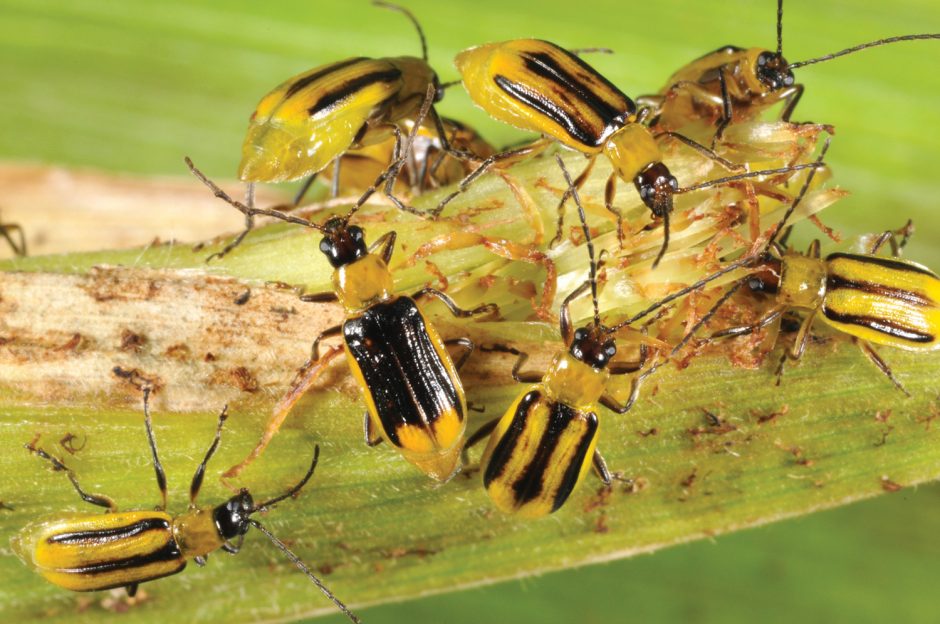
MURR research on the corn rootworm, a devastating crop pest (shown here in its adult beetle stage), could help plant breeders develop resistant varieties. Photo courtesy Purdue Department of Entomology.
Pesticides can’t solve the problem, and breeding new rootworm-resistant corn varieties could take years. So, in a recent series of studies, Ferrieri and his team have been studying why some plants can resist attacks. They used radioisotopes to trace essential nutrients and hormones as they moved through live corn plants, then compared the responses of healthy and rootworm-infested plants. “For some time, we’ve known that auxin, a powerful plant hormone, is involved in stimulating new root growth,” Ferrieri says. By tagging auxin with a radioactive tracer, the researchers were able to use a medical diagnostic imaging tool called positron emission tomography to watch auxin move through living plant roots in real time. The study revealed that auxin biosynthesis is vital to root regrowth and crops’ pest tolerance. Such resistance, scientists say, involves biochemical pathways influenced by the rootworm and triggered by glutamine metabolism. Plant breeders can use the study’s results to more quickly cultivate corn varieties that resist the rootworm.
In related work, Ferrieri is exploring how certain soil bacteria make auxin and transfer it to corn plants, thereby building natural resistance to the pest.
How to read an ancient pot
For 30 years, MURR researcher Michael Glascock has conducted archaeometry analysis on ancient artifacts from all over the world. His tally is about 150,000 artifacts, which is roughly one-half of all such items ever studied using neutron activation analysis, or NAA. In contrast to radiocarbon dating, which estimates an artifact’s age, NAA determines its origin. One of his recent projects involves tracking the origin of heretofore unstudied clay pots from ancient Rome. The black-gloss pottery is part of 100,000 ancient artifacts unearthed during construction in Italy’s capital city during the late 19th and early 20th centuries. They’ve since been stored, largely untouched, in the Capitoline Museums, one the world’s main repositories of ancient Roman artifacts.
The backlog of unstudied antiquities is a widespread problem, says Alex Barker, director of MU’s Museum of Art and Archaeology. In 2014, Italy made the rare move of sharing such artifacts with collaborators who will ease the backlog, generate new knowledge of ancient Rome and start databases to which scholars worldwide will contribute. The Capitoline chose MU as its first international collaborator because it possesses faculty with expertise in cultural history, an accredited museum with a strong antiquities collection and a nuclear reactor that can make highly specialized measurements.
To analyze the pots, Glascock drills into the broken edge of a shard. This allows him to extract clay powder while preserving the sample’s surface. He uses neutrons to irradiate the powder and then measures its gamma-ray emissions. For each pot, that gives him more than 30 of the clay’s elements — its chemical fingerprint. Of the 65 Roman pots analyzed so far, Glascock has identified three chemical fingerprints that are similar, and two others that are distinct, indicating the clays may come from multiple areas. Few museums permit such tests, but it’s the only way to reliably document the chemical “fingerprint” of an object, and thereby determine where it was made.

To get clay samples for analysis while preserving the exterior of an ancient Roman pot, researchers drill into the edge of a shard. Photo by Rob Hill
Clay pots were — and still are — part of everyday living. “We can watch the pulse of life through pots,” says Susan Langdon, professor and chair of the Department of Art History and Archaeology. “Pottery is durable, people make it constantly, and everyone needs it for cooking, serving and storage.” Ancient Romans used certain pot types in households and others in graves or shrines. “So, once we understand the shapes, pots can tell a lot about what’s going on in an archaeological site.”
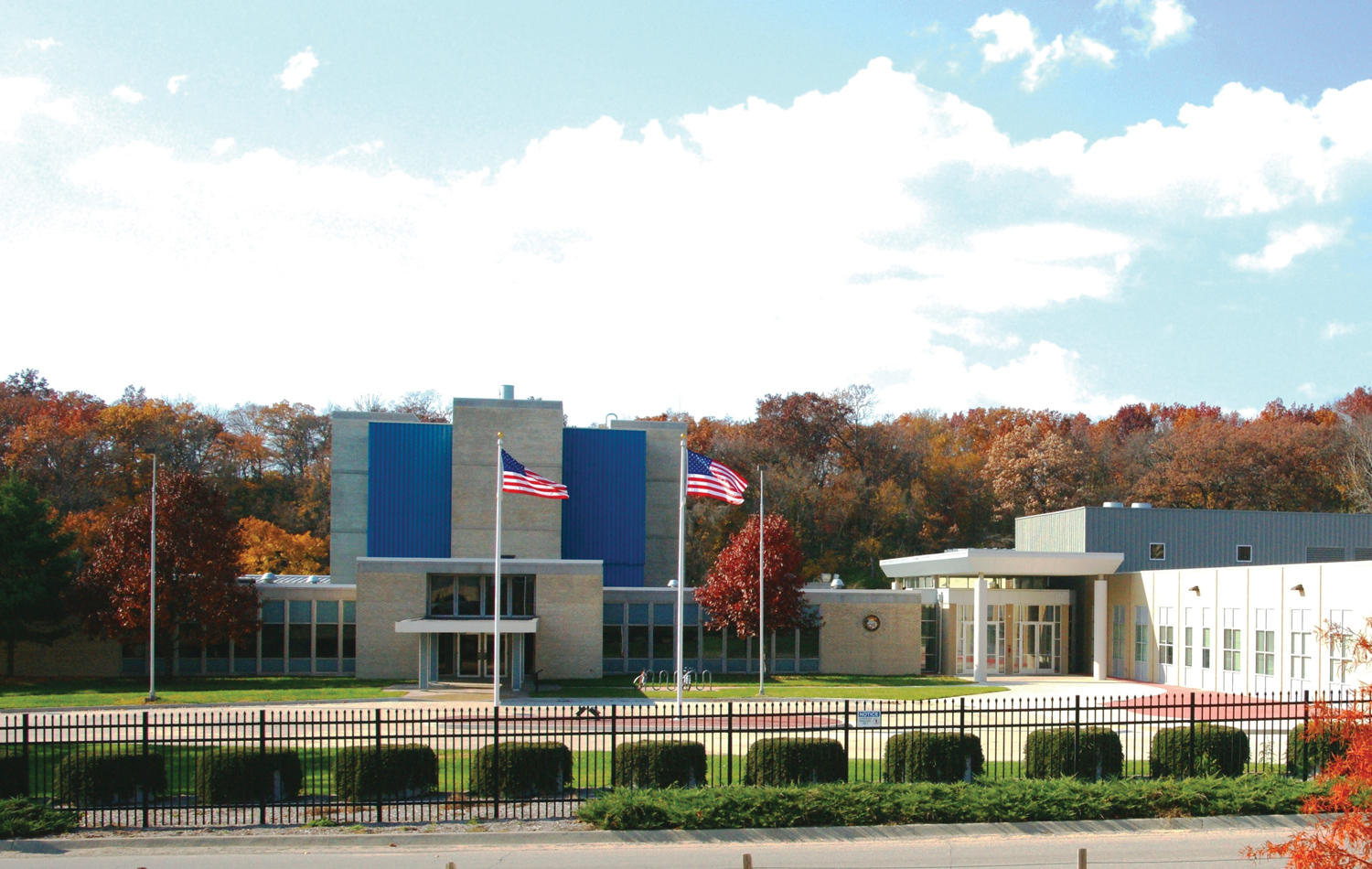
The University of Missouri Research Reactor (MURR), located on Providence Road, collaborates on research with units across campus. Photo courtesy MU News Bureau.
To read more MIZZOU magazine stories online, visit mizzou.com.



